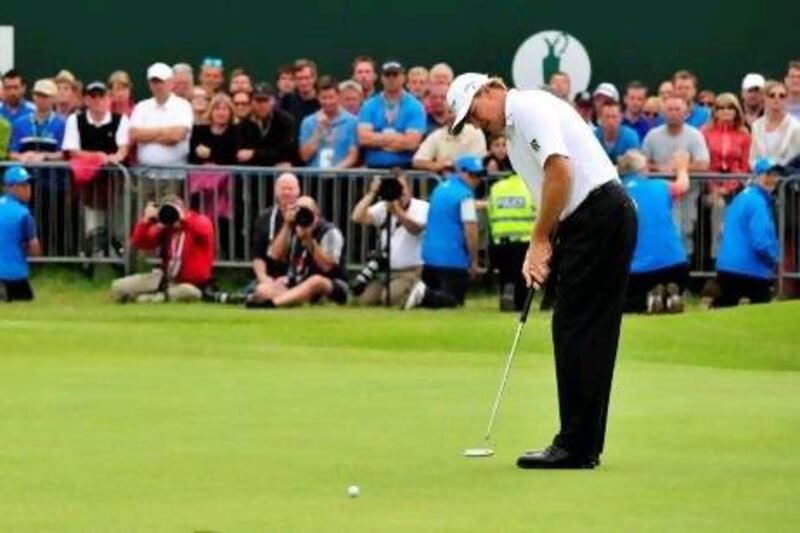Cast your mind back to the winner of the 1969 US Open. It was not Jack Nicklaus, who finished tied for 25th, or even Arnold Palmer, who tied for sixth. The victor that June day at Champions Golf Club in Houston was Orville Moody.
Remember him? Probably not, but he should be committed to memory for two remarkable achievements: winning one of golf's four majors, his only PGA Tour triumph. And transforming from arguably the worst putter in the game into someone so hot on the greens that he managed another 19 wins on the senior circuit.
The secret to his success? A switch to the long putter, so often the last resort for players who crumble with the short stick in their hands. For Moody, read Sam Snead, the winner of a record 82 PGA Tour titles, Johnny Miller and now a new breed of golfers controversially conquering the greens.
The long putter, whether anchored to the chin, sternum, stomach or arm, is enjoying a renaissance, with three of the past four major champions deploying the formerly unorthodox instrument.
Ernie Els perfectly putted his way to the Claret Jug on Sunday, with Adam Scott's second place making it a one-two for the long putter. In fact, at last week's British Open, 43 of the 156 players used an anchored putter.
The game's lawmakers – the Royal and Ancient and the United States Golf Association – face a dilemma stretching further than Scott's 14th club. The majority of professionals want long putters banned – eight years ago Els said they should be outlawed – while Mike Davis, the USGA's executive director, is concerned they will become the weapon of choice for the next generation of amateurs.
A decision is expected in September, once the labyrinthine ambiguities of such a law can be negated, yet will not be implemented until 2016 as the rules are reviewed in four-year cycles.
Despite the obvious aesthetic detraction, the long putter, when hinged to the body, allows players to negotiate part of game that should be essential: controlling your nerves to control the putting stroke.
"Guys wouldn't used them if they didn't putt better with them," said Padraig Harrington. "If the standard goes up it puts more pressure on the guys that aren't using one just to compete."
Or, as Els noted earlier this season after ditching his conventional putter: "As long as it's legal, I'll keep cheating with the rest of them."
Follow us
[ @SprtNationalUAE ]






